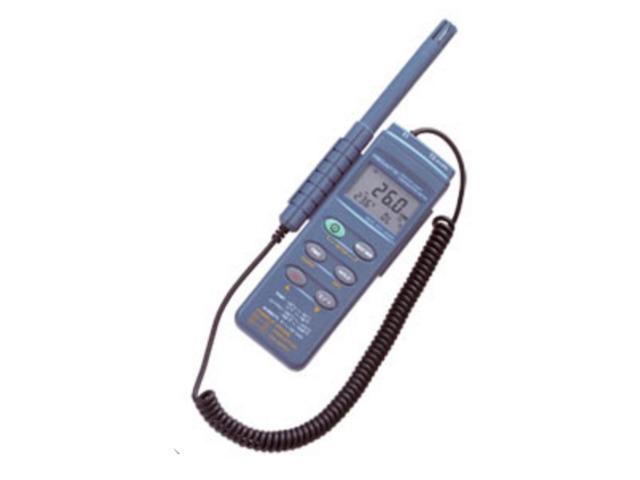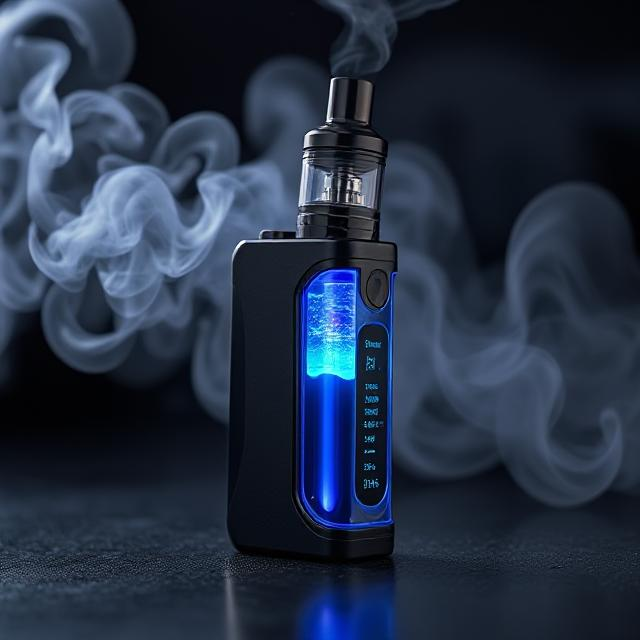What Is a Handheld Dew Point Meter and How Does It Work?

Ranging from HVAC and power generation to pharmaceuticals and food processing, monitoring moisture levels in gases and air is crucial for maintaining product quality, system efficiency, and safety. One of the most reliable tools for measuring moisture in compressed air and gases is the handheld dew point meter.
Compact, precise, and versatile, this instrument provides critical data on humidity and dew point temperature in real time. But what exactly is a handheld dew point meter, how does it work, and why is it so important across different industrial applications?
Components and functionality of meters, shedding light on their working mechanism and practical uses.
Understanding the Concept of Dew Point
Before delving into how a dew point meter works, it’s important to understand what dew point means.
The dew point is the temperature at which air becomes saturated with water vapor and begins to condense into liquid water. In simpler terms, it represents the threshold where moisture in the air can no longer remain as vapor. The higher the dew point temperature, the more moisture the air contains. Conversely, a low dew point indicates dry air.
For example:
If the air temperature is 30°C with a dew point of 25°C, the air is quite humid.
If the air temperature is 30°C with a dew point of 5°C, the air is much drier.
In industrial environments, the dew point is a key indicator of gas dryness. In compressed air systems or gas lines, excessive moisture can lead to corrosion, equipment damage, and product contamination. Hence, accurately measuring dew point is essential for both operational safety and efficiency.
What Is a Dew Point Meter?
A handheld dew point meter is a portable instrument designed to measure the dew point temperature and moisture content of gases or air directly at the source. Unlike fixed systems, these compact meters allow technicians and engineers to perform on-site measurements quickly and efficiently.
Handheld meters are particularly valuable for:
· Field inspections of compressed air dryers and gas systems.
· Quality assurance in manufacturing processes.
· Maintenance checks in HVAC, pharmaceutical, and food production environments.
· Environmental monitoring, especially in places requiring controlled humidity.
Most modern handheld meters are digital, equipped with advanced sensors, microprocessors, and display screens that present accurate readings within seconds.
Key Components of a Dew Point Meter
A typical dew point meter comprises several integral components that work together to measure and display the dew point accurately. These include:
Dew Point Sensor (Hygrometer Sensor)
The heart of the device, the dew point sensor, detects the amount of moisture in the sampled air or gas. Various sensor technologies are used, with capacitive and chilled mirror types being the most common.
Sample Inlet/Probe
This is the part that comes into contact with the air or gas sample. It allows the device to draw in the sample for measurement, either through direct insertion or via tubing.
Temperature Sensor
A temperature sensor ensures accurate dew point calculations by compensating for ambient temperature variations.
Display Screen and Controls
The interface shows real-time readings such as dew point temperature, relative humidity, and often pressure or temperature values. It may include buttons or touch controls for calibration, data logging, and setting measurement parameters.
Processor and Memory
The internal microprocessor converts sensor signals into digital readings and stores data for later analysis.
Battery and Power System
Since these meters are handheld and portable, they usually operate on rechargeable lithium-ion batteries, offering several hours of continuous use.
Protective Housing
Designed for rugged environments, handheld meters often feature shock-resistant and weatherproof casings.
How Does a Handheld Dew Point Meter Work?
The operation of a point meter depends on the type of sensor it uses. However, the overall process follows a general principle: the meter samples the air or gas, detects its moisture content, and calculates the dew point temperature.
Let’s explore how the two main sensor technologies—chilled mirror and capacitive sensors—work.
1. Chilled Mirror Dew Point Meters
The chilled mirror method is considered the most accurate way to determine dew point. Here’s how it works:
A small mirror surface is cooled gradually until moisture from the air begins to condense on it.
An optical system (usually a light beam and detector) monitors the mirror’s surface for the first signs of condensation.
The temperature at which this condensation appears is recorded as the dew point temperature.
This method provides direct physical measurement and is highly accurate. However, chilled mirror systems are more complex, sensitive to contamination, and require careful maintenance, which can make them less suitable for harsh or dusty field environments.
2. Capacitive (Polymer or Ceramic) Dew Point Meters
Most modern handheld devices use capacitive sensors because they are more robust, compact, and faster-responding than chilled mirror types.
The sensor consists of two conductive plates separated by a moisture-sensitive dielectric material (often a polymer or ceramic layer).
As the moisture content in the surrounding air changes, the dielectric constant of the material changes.
This change alters the electrical capacitance between the plates.
The meter’s electronics convert the change in capacitance into a humidity or dew point value.
Capacitive sensors are widely used for portable dew point meters due to their durability, low power consumption, and relatively fast response time.
Factors Affecting Measurement Accuracy
Several factors can influence the accuracy of dew point meters, including:
Temperature Fluctuations: Sudden temperature changes can cause temporary deviations in readings.
Contamination: Oil, dust, or dirt can affect sensor performance, especially in compressed air systems.
Pressure Variations: Dew point changes with pressure; accurate results require proper pressure compensation or measurement under known conditions.
Calibration: Regular calibration ensures consistent performance and accuracy over time.
To minimize these issues, manufacturers recommend routine maintenance, periodic calibration, and proper sampling techniques (e.g., allowing the sensor to stabilize before recording a reading).
Applications of Handheld Dew Point Meters
Handheld meters are indispensable in numerous industries and applications, including:
Compressed Air Systems
Measuring dew point ensures that dryers and filters are functioning correctly and that air quality meets ISO standards.
Natural Gas and Petrochemical Industries
Monitoring moisture prevents pipeline corrosion, hydrate formation, and equipment failure.
HVAC and Building Maintenance
Dew point measurements help optimize humidity control and prevent condensation-related damage.
Pharmaceutical and Food Processing
Ensuring low-humidity environments is essential for product stability, packaging, and compliance.
Electronics Manufacturing
Controlling moisture levels is crucial in semiconductor and circuit board production to prevent defects.
Advantages of Point Meters
· Portability: Easy to carry and use on-site without external power.
· Quick Results: Provides fast, real-time readings.
· Versatility: Can measure various gases, including air, nitrogen, and natural gas.
· Data Logging: Many models include memory for storing multiple readings.
· Ease of Use: Simple interface and digital display for field technicians.
Conclusion
A handheld dew point meter is a vital diagnostic and monitoring tool for industries where moisture control is critical. By measuring the temperature at which water vapor condenses, it provides an accurate indication of humidity and gas dryness.
Whether based on chilled mirror precision or capacitive sensor technology, these instruments deliver reliable, on-the-spot results that help prevent system failures, ensure product quality, and maintain operational efficiency.





